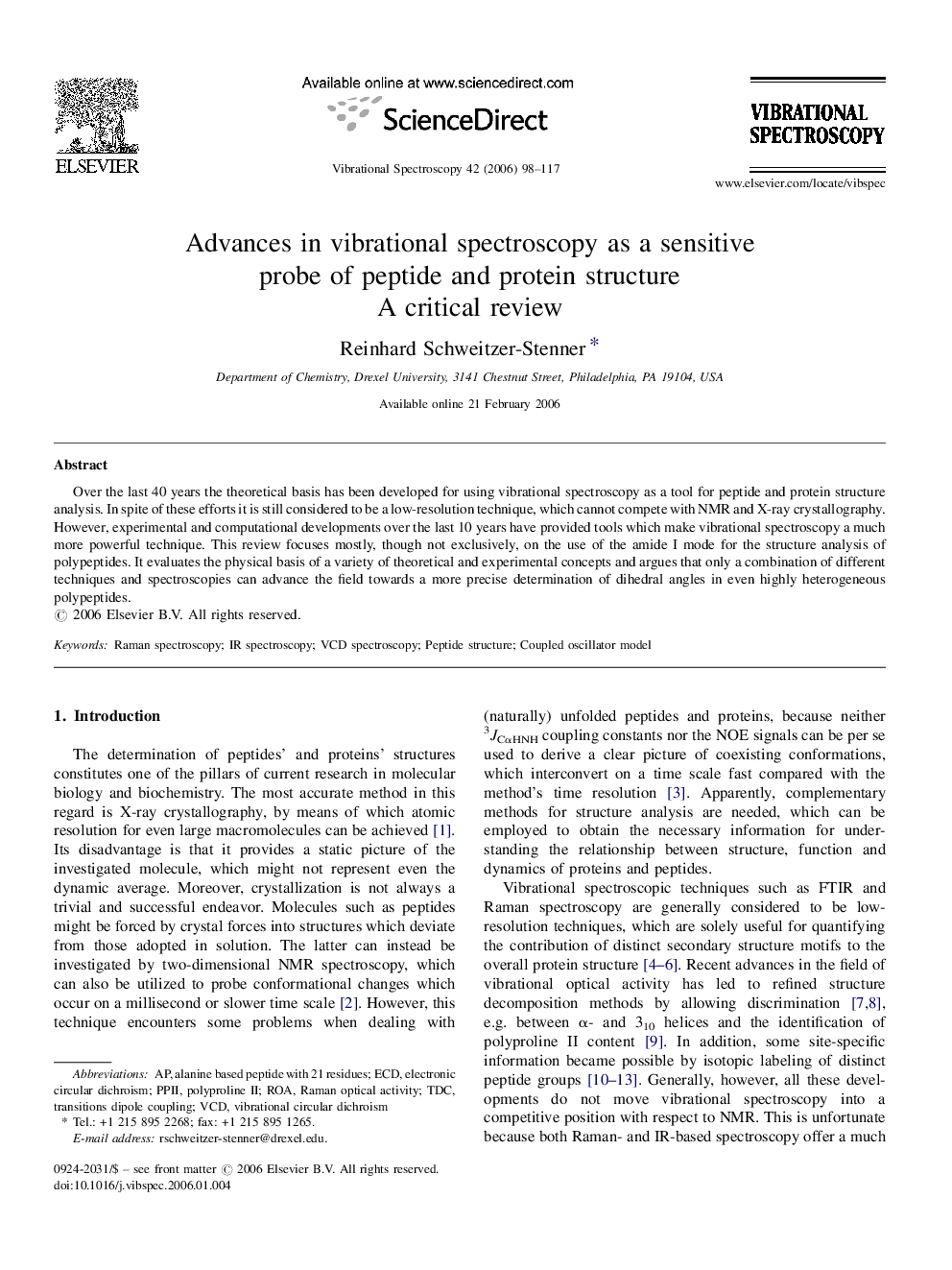| Article ID | Journal | Published Year | Pages | File Type |
|---|---|---|---|---|
| 1249853 | Vibrational Spectroscopy | 2006 | 20 Pages |
Over the last 40 years the theoretical basis has been developed for using vibrational spectroscopy as a tool for peptide and protein structure analysis. In spite of these efforts it is still considered to be a low-resolution technique, which cannot compete with NMR and X-ray crystallography. However, experimental and computational developments over the last 10 years have provided tools which make vibrational spectroscopy a much more powerful technique. This review focuses mostly, though not exclusively, on the use of the amide I mode for the structure analysis of polypeptides. It evaluates the physical basis of a variety of theoretical and experimental concepts and argues that only a combination of different techniques and spectroscopies can advance the field towards a more precise determination of dihedral angles in even highly heterogeneous polypeptides.
